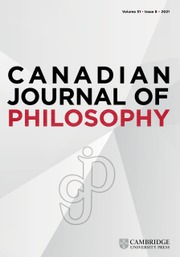No CrossRef data available.
Article contents
What constitutes the health subject?
Published online by Cambridge University Press: 27 December 2024
Abstract
According to many philosophical accounts, health is related to the functions and capacities of biological parts. But how do we decide what constitutes the health subject (that is, the bearer of health and disease states) and its biological parts whose functions are relevant for assessing its health? Current science, especially microbiome science, complicating the boundaries between organisms and their environments undermines any straightforward answer. This article explains why this question matters, delineates a few broad options, offers arguments against one option, and draws some modest implications for philosophical accounts of human health.
Keywords
- Type
- Article
- Information
- Copyright
- © The Author(s), 2024. Published by Cambridge University Press on behalf of The Canadian Journal of Philosophy, Inc


